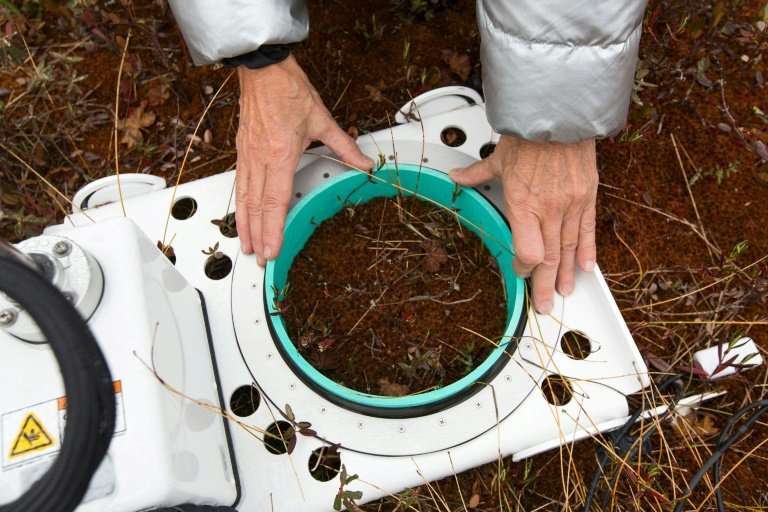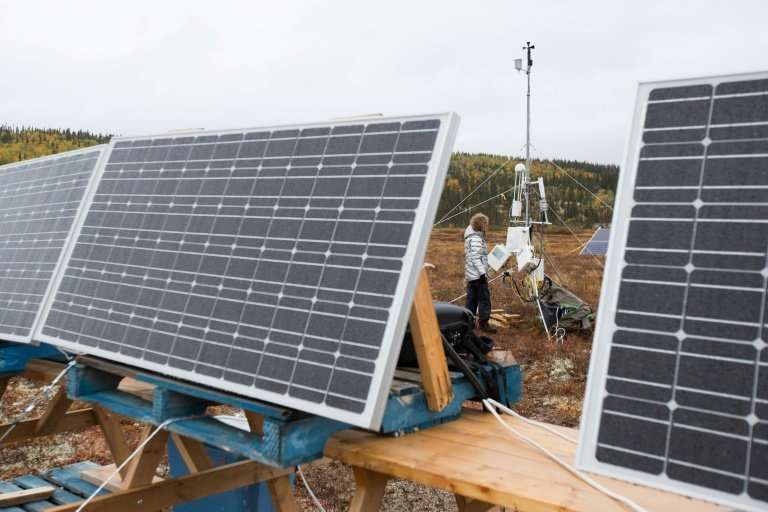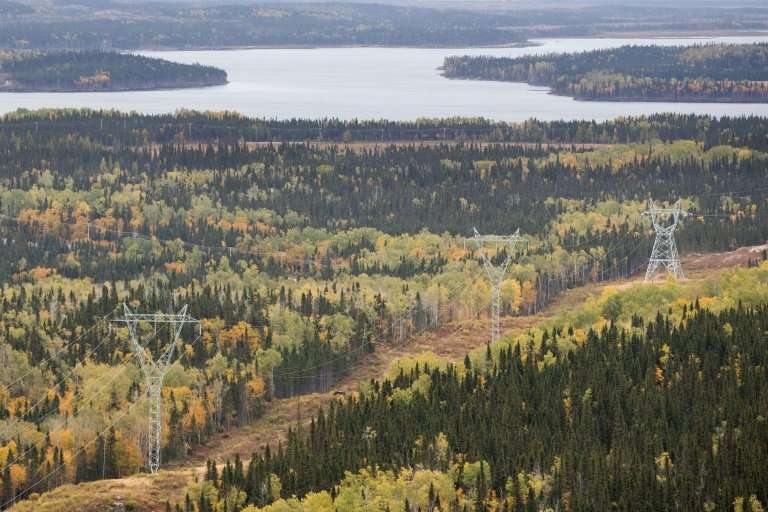Researcher Michelle Garneau from the University of Quebec in Montreal tests soil in a peat bog to gauge the climate impact of the giant Romaine hydroelectric dam project
Squatting on spongy soil, a climate scientist lays a small cone-shaped device to "measure the breathing" of a peat bog in the northern part of Canada's Quebec province.
Michelle Garneau, a university researcher and a member of the UN's Intergovernmental Panel on Climate Change (IPCC), is collecting the first data on areas flooded to build the new Romaine hydroelectric dams in a bid to assess the project's impact on the region.
While renewable hydroelectricity itself is considered to be one of the cleanest sources of energy on the planet, there is currently no proven model for calculating the greenhouse gas emissions released by flooding huge areas behind new dams.
With construction of four new dams on the Romaine River in northern Quebec nearly complete, researchers saw an opportunity to try out new techniques to measure its carbon footprint.
The team led by Garneau zeroed in on a swamp a mere stone's throw from the raging river in the wilds of Canada's boreal forest, an area accessible only by helicopter.
After landing, she takes several boxes out of the belly of the aircraft and places them next to some solar panels and a portable weather station that she and her students installed over this summer.
The devices are expected to produce sample data within two years.
"Every 20 minutes, the cone will capture and measure the breathing of the soil," she explains, placing a transparent device that resembles a handbell on the lichen, as wild geese honk and cackle overhead.
Researcher Michelle Garneau's team is building a temporary weather station to record data from the area near the Romaine hydroelectric dam project in Canada's Quebec province
She takes a few steps further on the unstable ground and places a box that connects to sensors already sunk into the ground.
"This automated device to measure the photosynthetic activity records the CO2 and methane emissions every three minutes, for hours," the researcher says.
Carbon dioxide (CO2) and methane emissions are the main sources of global warming.
Another team is measuring carbon dioxide emissions from artificial lakes created by flooding lands behind dams, for eventual comparison.
More research needed
About one-third of the world's land area is covered by forests, which act as sinks for greenhouse gases.
Canada's vast boreal forest has trapped more than 300 billion tonnes of carbon dioxide, according to the Washington-based Natural Resources Defense Council.
However, 10 to 13 percent of Canada's boreal forest is covered by peatlands—wetlands with high levels of organic matter—and very little is known about them, says Garneau, research chair on peat ecosystems and climate change at the University of Quebec in Montreal (UQAM).
An aerial view with the Romaine River in the background and Hydro-Quebec's power line seen north of Havre-St-Pierre in Canada's Quebec province—climate scientists are trying to gauge the impact of a new hydroelectric dam project
Her work is supported by the province's utility Hydro-Quebec, whose dams—once the four additional hydropower plants on the Romaine River are turned on in 2019—will supply 90 percent of Quebec's power needs.
The data collected in this study should "serve the IPCC and the advancement of science in general" by helping to better peg the carbon footprint of flooded wilderness, Garneau told AFP.
The information is crucial with several new big hydroelectric projects due to come online in the coming years, including in Canada, the Democratic Republic of Congo, Ethiopia, Laos, Tajikistan and Zimbabwe.
"We're creating artificial reservoirs around the world, but GHG emissions from hydroelectricity are not well accounted for," said Paul Del Giorgio, a biologist at UQAM.
"There are some dams in tropical zones that emit as many greenhouse gases as coal plants," due to the accelerated decomposition of drowned organic materials, said the Argentine researcher.
Del Giorgio and his students complement Garneau's research by taking water samples from flooded lands behind dams that are analyzed in a field laboratory set up in Havre-Saint-Pierre's town hall.
Both datasets will be plugged into a complex set of equations to determine the volume of greenhouse gas emissions from dams.
The first results of their work are expected in 2019 and are highly anticipated by climate scientists worldwide, says Garneau.
The IPCC desperately needs "to have better models, for better predicting climate change," she said.
© 2018 AFP


























